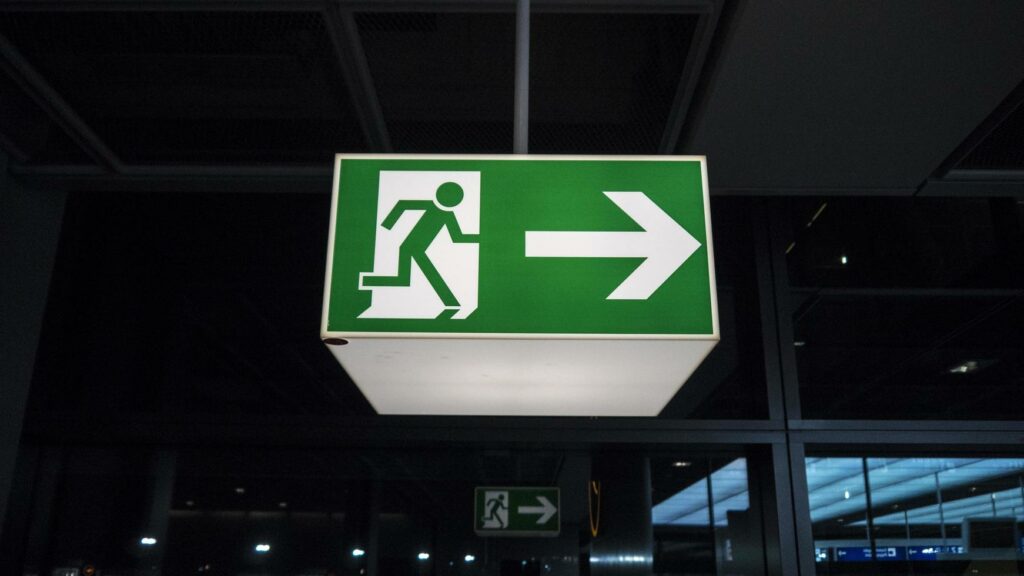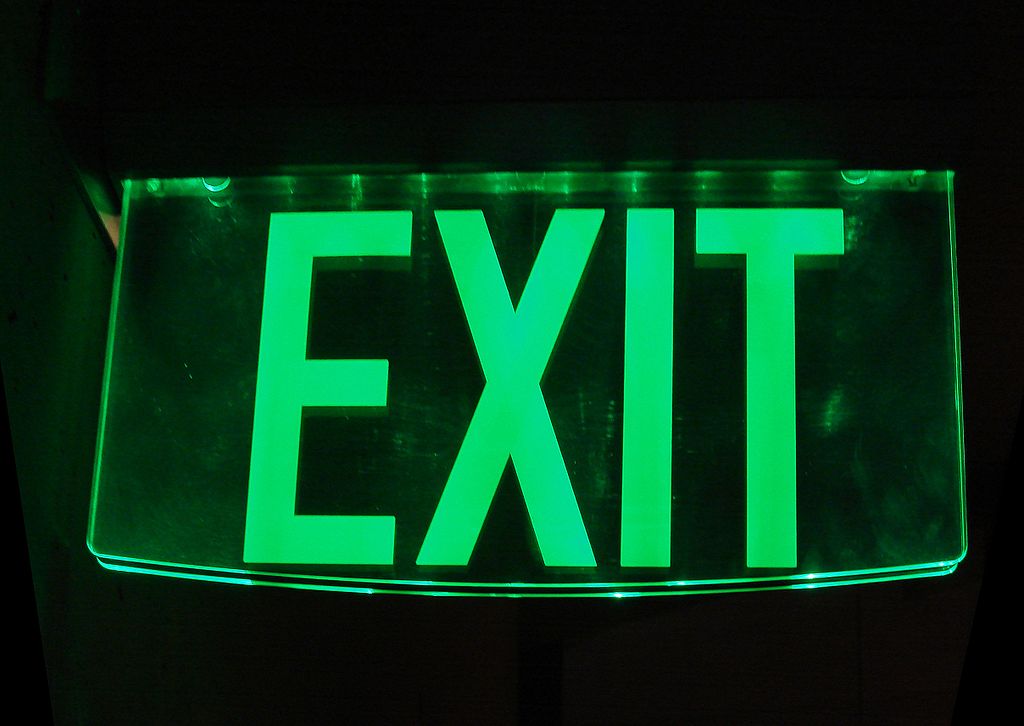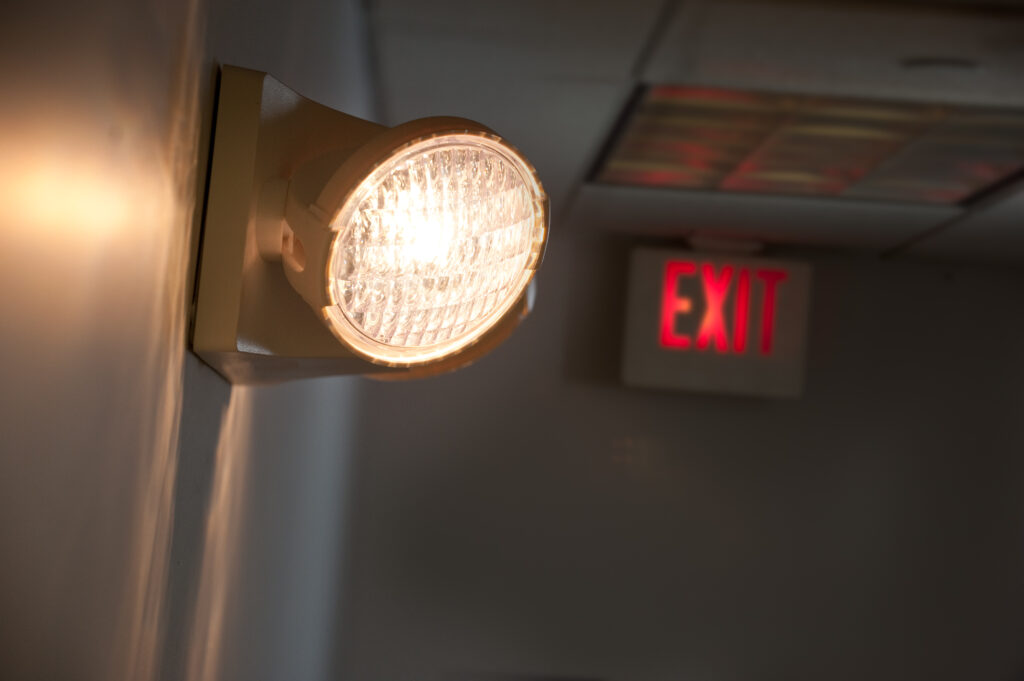Blokes don’t really enjoy shopping, unless its cars or bikes that we’re mulling to buy. If you’re doing the weekly bout in the mall, there’ll be a time that you’ll soon be begging for the next set of exit signs to pop up. Joke aside, exit signs appear all over public places with high pedestrian traffic. This includes said malls, as well as schools, hospitals, stadiums, multi-storey residential buildings, department stores, museums, airports, railway stations. The list goes on. Exit signs, emergency lights and warning signals are also mandatory in any small or large business and their use and installation are regulated by state and federal law.
What are Emergency Lights and Signs?
Emergency lights and exit signs are safety signs and lights that inform people in commercial, industrial, residential or government buildings where the nearest safe exit is. Lights and signs need to be visible to anyone in the building. They are used to safely guide all occupants within the buildings in an orderly and timely evacuation of the premises in the case of an emergency. This will follow a pre-drawn evacuation route. Both an emergency light and exit sign is tasked to work even when mains power is cut, in which case they automatically switch to battery power.

Types of Emergency Lighting and Signalisation
Two types of emergency lighting and signalisation are used – maintained and non-maintained. Maintained lights and signs are on all the time. You’ll find these in most public settings. If the mains power does go out, they resort to battery backup. Non-maintained emergency signs and lights only turn on during an emergency. In such cases, they’re powered only by a battery. These signs and lights are usually found in offices, warehouses, factories and other settings where employees or occupants are familiar with floor layout. In places like government agencies, hospitals and schools there’s the likelihood that both types of signalisation and lighting exist within a complex network.
Exit Signs
An exit sign is placed above every door, staircase and along walls that are part of an escape route. As mentioned, a maintained exit sign stays on constantly. They will be permanent fixtures in most buildings and sites, but there are also temporary signs used in ongoing construction sites and replaced with permanent signs once work has finished. Different types of exit signs are available for different purposes and placed in different locations. And each will have a distinct look.
Types of Exit Signs
By Materials Used
The most common type of exit sign is one made of thermoplastic. This can withstand most of the rigours of everyday industrial use, being exposed to high temperatures, increased humidity, moisture and precipitation and even chemical spills. They’re more than capable in less demanding public settings, and where they’re mostly found. Recent thermoplastic exit signs use efficient and effective LED light strips placed at the top and/or bottom of the housing. The signs and batteries are rated for at least 5 years in non-maintained signs, and LEDs are rated to shine for at least 50,000 hours in maintained signs.

More expensive, but more durable signs are made of aluminium housings. These won’t rust, melt, crack or stain no matter where they’re placed. They’re also water and impact-proof and function normally in temperature extremes. An aluminium exit sign would be the preferred choice in refrigeration rooms, in warehouses, factories, and any industrial or commercial setting with high-risk exposure. Like thermoplastic signs, they too have LED lighting, but may also have more complex lens arrays for visibility over larger distances. As an industrial offering, they’re rated to last at least 8 years.
By Purpose and Design
There’s a wide range of signs on offer. Starting from the “running man’ exit sign, appointed with or without left/right or up/down arrows and plain “EXIT” signs with white lettering set against a green background (or green lettering on a white background). The most recent are ‘adaptive’ exit signs, which can be automatically programmed to change the direction of evacuation according to the current situation. Additional lights and signs may point to a designated fire exit, or assembly area. Variants of the above are dynamic exit signs with a flashing white/green arrow, direction signs (with arrows only) and signs with red lettering.
Most signs are rectangular in shape, and have front and back panels. You’ll also see edge-lit architectural style signs in a single panel in places like hotel lobbies and restaurants.
All signs need to meet current regulations. This means they must have fitted test switches, be able to turn on instantly and illuminate for the specified period, and have IP and IK ratings for the environment in which they’re used.

Emergency Lights
An exit sign is often used along with static or flashing emergency lights. Square or rectangular panels are used in places like offices, warehouses and workshops, are of the maintained type and have high brightness levels. Batten lights may be positioned above exit signs, are usually of the non-maintained type and function to illuminate the sign in case of an emergency. These are often waterproof, and found in offices, commercial shops and smaller industrial sites. Other emergency lights include circular bulkhead lights in industry and external areas, boxy flashing twin spots in car parks and warehouses and circular downlights for residential uses.


